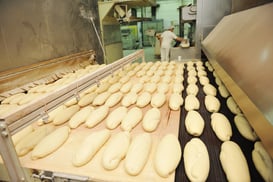
Manufacturers and distributors in the food and beverage industry generally operate on slimmer profit margins than other industries. For this reason, it’s crucial for them to understand the costs involved in developing, manufacturing, marketing, selling, and shipping their products. With this knowledge, companies can ensure all products are being sold at appropriate price points. Food ERP software assists with this process to track and analyze costs and maximize profits.
Food and Beverage Manufacturing and Distribution Costs
The following are some examples of the largest food and beverage manufacturing and distribution costs that are often overlooked:
- Cost of Materials: These costs would appear to be the easiest to capture, but they are often incorrect because they don’t get updated or associated with specific production batches.
- Production Costs: If your method for determining this is a guess informed by experience and gut feeling, don’t feel bad. Most plants don’t have much if any visibility into time and materials consumed for typical plant operations.
- Discounts: The goal of this well-known sales tactic is to take a short-term loss to establish a new relationship with a customer for a long-term gain. But it’s often not accounted for, which can lead people to think that because sales are increasing, so are profits, which may not be the case.
- Marketing Campaigns: This cost is important to building the sales funnel, but the costs of marketing activities—advertising, media, content creation, list rentals, and much, much more—are rarely accounted for in the cost of a product. It’s important to set measurable metrics to determine the success of these campaigns. After all, if they’re not making money, why run them?
- Special Promotions: Like discounting, special promotions are to lose a little now to gain a lot later. But according to a study from Neilson, fully two-thirds of promotions don’t break even! In fact, getting rid of 22% of promotions would increase sales revenue. That’s not to say that promotions are a poor tactic—they’re not—but they do need to be measured and understood to ensure they are effective at attaining their goal.
- Shipping: This is another enormous cost, and many manufacturers have tried to reduce it by utilizing third-party logistics companies. But while this reduces capital expenditures, it can be difficult to track and allocate these costs accurately if the service provider doesn’t provide ample detail in billing.
- Inventory Costs: It’s still common to manage inventory using paper forms, which introduces errors and delay in understanding the true state of the warehouse. And in many organizations, the location of items within the warehouse is dependent on tribal knowledge, which can be lost if key employees leave, get sick, or go on vacation. Additionally, many pickers simply take what’s easiest at hand, which means that stock at the back may go unseen for months and expires.
Certainly, this is nowhere near an exhaustive list, but it gives a view into how complex the situation is when it comes to accounting for all the true costs of a product. Pricing products to protect margins means you need to account for all of it or, at least, as many of the largest costs as possible.
Food ERP Software and Other Strategies for Cutting Costs
- Go after the big stuff first: You don’t have to go after everything. You want to understand as much about your costs as possible, but especially if you’re early in the process, don’t try to boil the ocean. The 80-20 rule is a good one to follow: start with the 20% of activities that account for 80% of costs. Typically, these high-impact areas are:
- Procurement
- Production
- Inventory
- Promotions
- Freight
- Invest in upstream planning: The more high-quality upstream planning you do, the more efficient you’ll be downstream.
- Standardize your business processes: If everyone follows the same process, it’s much easier to see when things are going awry, and costs are starting to balloon. When different groups do things a little differently than one another, costs become much tougher to capture accurately.
- Invest in transformative technologies: It’s nearly impossible to track costs in an accurate and timely manner when processes are a morass of paper forms, manual data entry, and scattered spreadsheets. Start with a food ERP software system, which provides a solid foundation on which to build additional technologies.
- Automation: Again, don’t try to boil the ocean. Start small with relatively simple projects that will nonetheless have a big impact, such as installing sensors to count items accurately. Celebrate and promote the success of these efforts to expand automation to other areas.
A food ERP software system is part of capturing and controlling the costs of your products. This is an ongoing process that will improve with time. Introducing automation into your business will pay off with increased efficiency and lower costs.
PositiveVision Can Help You Control Food and Beverage Industry Costs
As a full-service accounting software consulting firm, PositiveVision is committed to putting the right software in place to make its food and beverage industry clients more profitable. We can show you how a food ERP software ERP system can benefit your company now and as your business grows. Talk to an accounting software consultant now.


 © 2019 PositiveVision • 219 E. Thorndale Ave. Roselle, IL 60172
© 2019 PositiveVision • 219 E. Thorndale Ave. Roselle, IL 60172